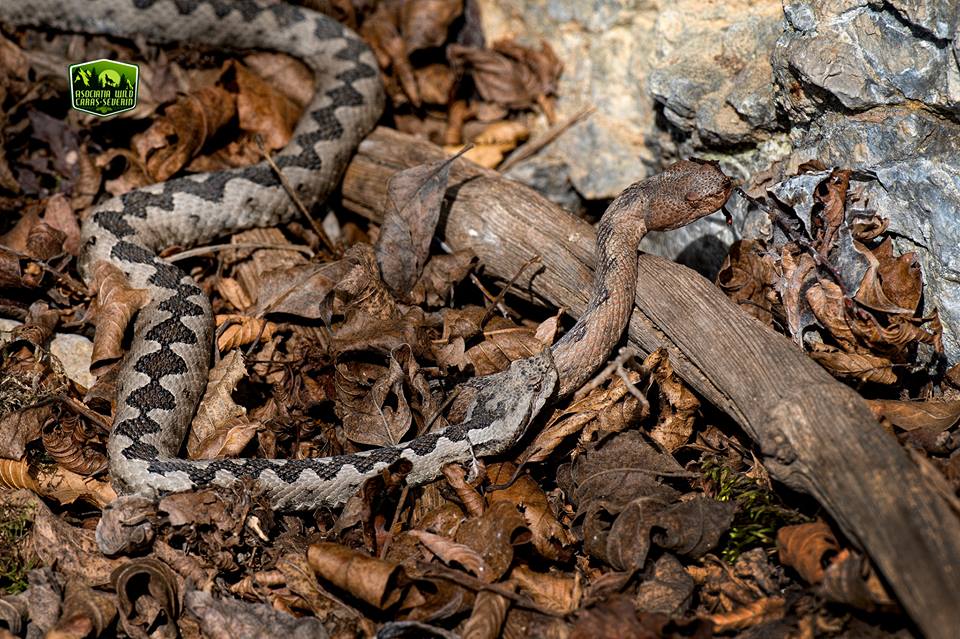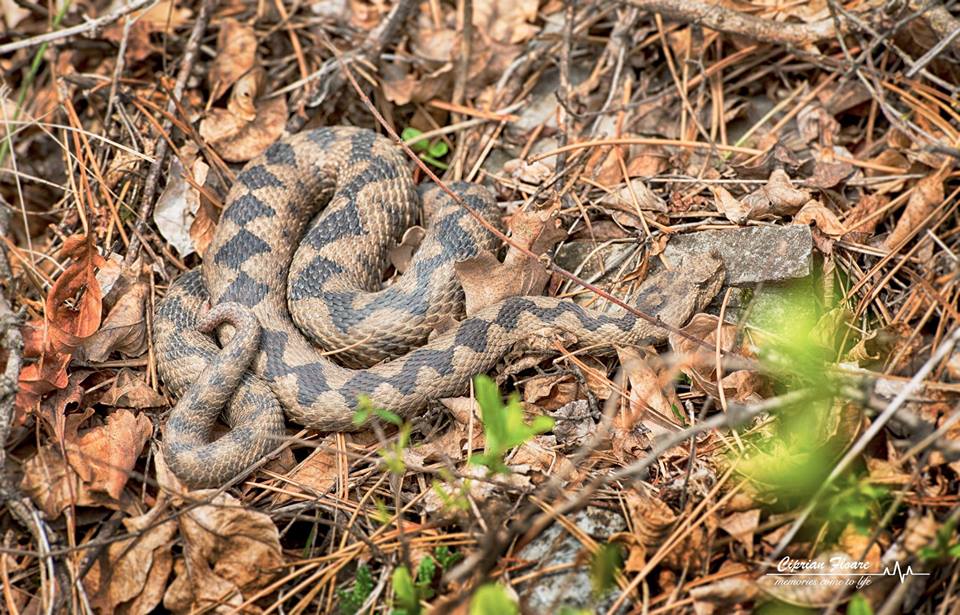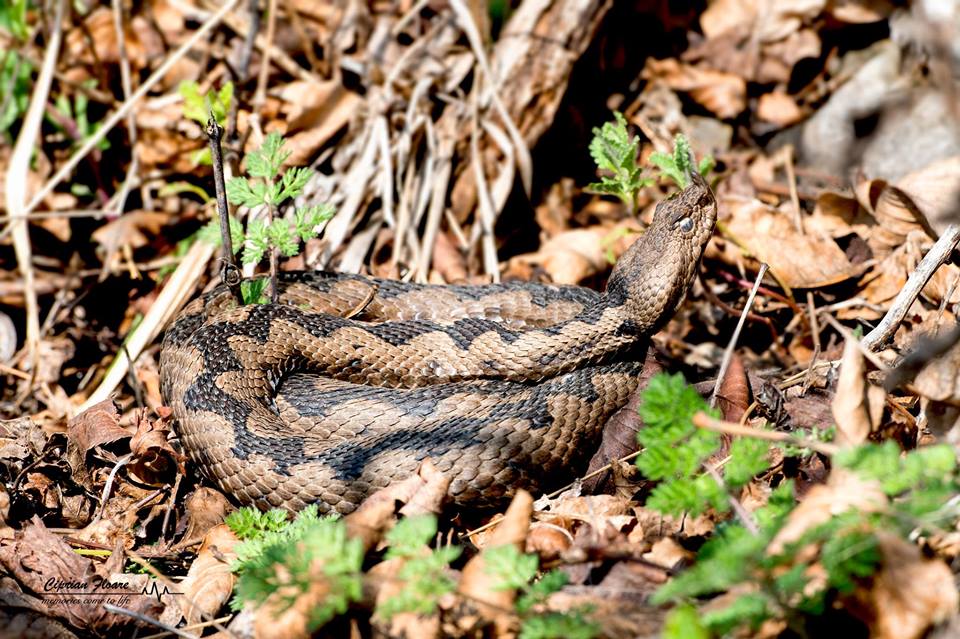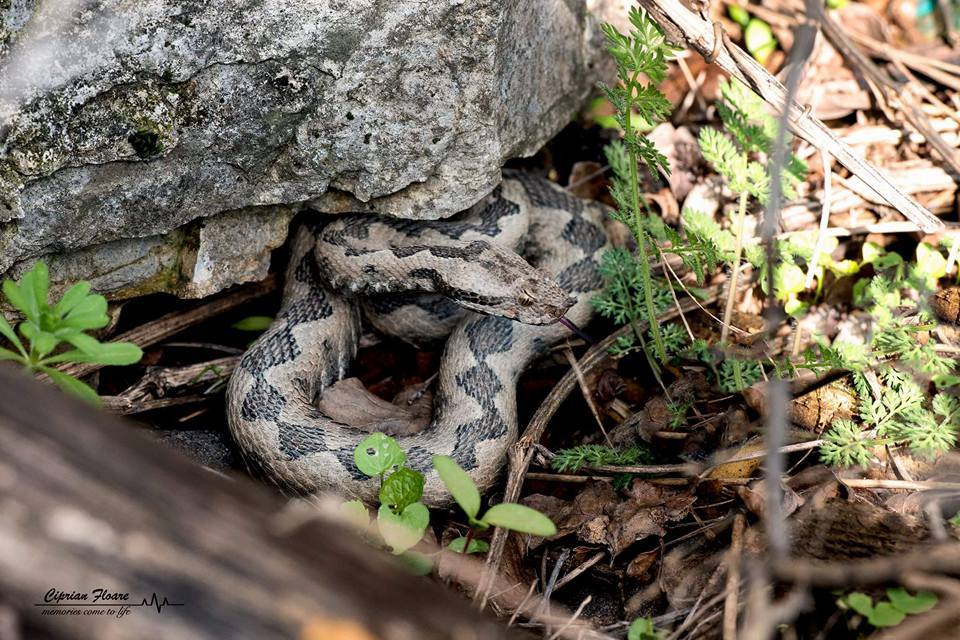
End of hibernation for the viper - what you need to know!

It is advisable that people know as much as possible about the end of hibernation and how they can protect themselves or act in case of a bite. Wild Caras-Severin Association published a very comprehensive and well-structured information note.
P.S. Documented additions are well received and will be added to the article.
(c) Wild Caras-Severin Association
Wild Caras-Severin aims to protect and promote natural habitats and wild fauna and flora species in harmony with the interests of local communities for sustainable economic development. In this regard, the association wanted to dismantle a few of the "myths" related to the viper and give some advice.
1. Area of distribution
It is quite improper to talk about a habitat, because it is very likely to come across vipers where you expect the least. For example, two viper species live in Caras-Severin: Vipera ammodytes ammodytes, accounting for about 90% of the county population, and Vipera berus, a much less common species. They can be distinguished very easily because the horned viper, as indicated by its name, has a horn at the top of the head. We usually see them in limestone areas, but also on mountain peaks and even in cities. For example, activists from Wild Caras-Severin Association have found some specimens in Oravita, Resita and Baile Herculane.
Photo: Ciprian Floare (c) Wild Caras-Severin Association
2. Which vipers are the most dangerous
The horned viper is a step ahead because, although it has a lower concentration of hemotoxins, it injects a larger amount of venom. The common viper has a higher concentration of hemotoxins but it injects a smaller amount of venom. Therefore, the viper's bite is dangerous, and catching a viper, especially a juvenile, can be fatal. Juveniles are by far the most dangerous because they are more aggressive and their venom has a very large amount of hemotoxins.
Photo: Nera Gorge-Beusnita National Park
3. How they attack
Adult vipers are much more balanced and avoid biting for several reasons:
- They do not waste their venom because they need it to get their food;
- The first bite is often harmless, meant only as a warning;
- Their intuition tells them that they might be killed if they cause a painful bite to a bigger creature.
Photo: Ciprian Floare (c) Wild Caras-Severin Association
4. Behavior
Unfortunately, a lot of people are terrified by the presence of vipers and there are people who avoid hiking while vipers are active. Sadly, vipers are regarded as monsters that wait to attack people and kill them with a cold-blooded bite. In reality, vipers avoid human contact as much as possible, they run at the first sign of human presence and attack only in extreme situations, when they have no other alternative, as declared by the representative of Wild Caras-Severin Association, Ciprian Floare. He also states that when attacking, a viper can "jump" up to two thirds of its length, so about 30-60 cm.
Photo: Ciprian Floare (c) Wild Caras-Severin Association
5. How to avoid accidental encounters with vipers
- Inform yourselves about the route you are about to take, vipers have a very good camouflage and most likely you might pass by without seeing them;
- Wear suitable equipment: boots, long trousers made of more durable material (socks to cover the trousers, also helpful against ticks);
- For added safety you can wear a pair of leg gaiters;
- do not panic when you see a viper! Try to walk around it - a few meters away, and be patient if it tries to leave. If you come across a viper on a foot path, and it is numb, you can move her away using a long stick;
- Vipers are also active at night when temperatures are high and they hunt rodents, which sometimes brings them near human settlements;
- Be careful when sitting on grass, climbing or stepping over stone thresholds or tree trunks of fallen trees. These are places where vipers like to camouflage. If you walk close to them or even on them, they will certainly attack;
- Be more vigilant in March-April, because it is when they come out of hibernation. This period also coincides with the mating season, and the "newly weds" will by no means get out of the way, and if you "ruin their wedding" by approaching them, they will certainly fight back.
Photo: Ciprian Floare (c) Wild Caras-Severin Association
6. What to do in the event of a bite
- Try to calm down, do not panic;
- Call 112 and report the incident immediately. If you do not have a signal, you have to calmly move to a GSM signal area;
- Stay in a horizontal position until aid arrives;
- Clean the bite with water;
- Hydrate yourself to minimize the effects of venom on the kidneys;
- Do not make incisions to drain blood;
- Do not apply a tourniquet, as the venom will have a higher concentration and will destroy the cells;
- You can apply an elastic strap to the bitten limb, but not directly on the bite (upper to the bite); it has the role of lowering the blood flow to the body, thus limiting the immediate effects;
- Do not apply cold objects or ice;
- Do not drink alcohol.
(C) Copyright Wild Caras-Severin Association
7. How to treat a viper bite
In the event of a bite, antivenom can be given after about 6-8 hours, and even if there is none in stock, it is provided urgently. Attention, antivenom is administered only under medical supervision, do not acquire or administer it yourselves because it must be kept under strict temperature conditions and some people may develop allergic reactions to it.
8. Vipers are protected by law
Vipers are protected under Law 13/1993 on the accession of Romania to the Convention on the Conservation of Wildlife and Natural Habitats in Europe, and the killing or capture of vipers is punishable by law.
We hope the information provided is clear and it will change your opinion about vipers, being less afraid of them once they come out of hibernation.
Information provided by Wild Caras-Severin Association.
You can support the activity of the association by redirecting 2% from your income tax.
The donation does not involve any additional contributions or taxes.





